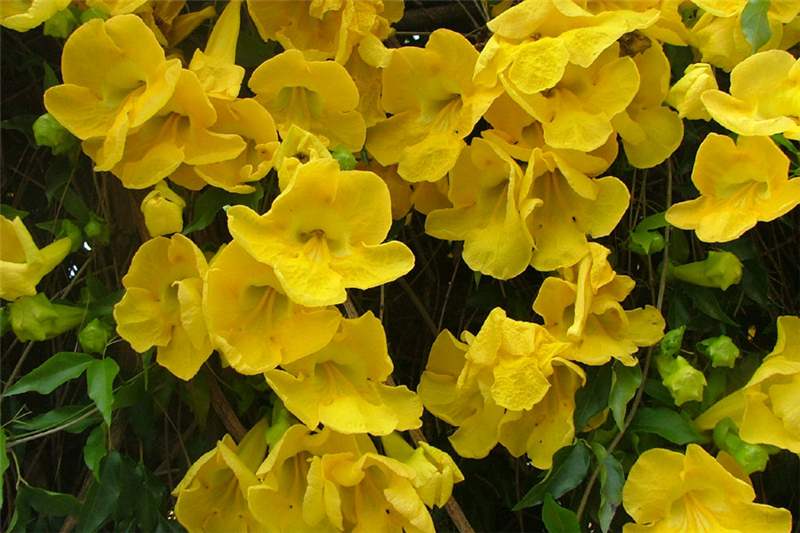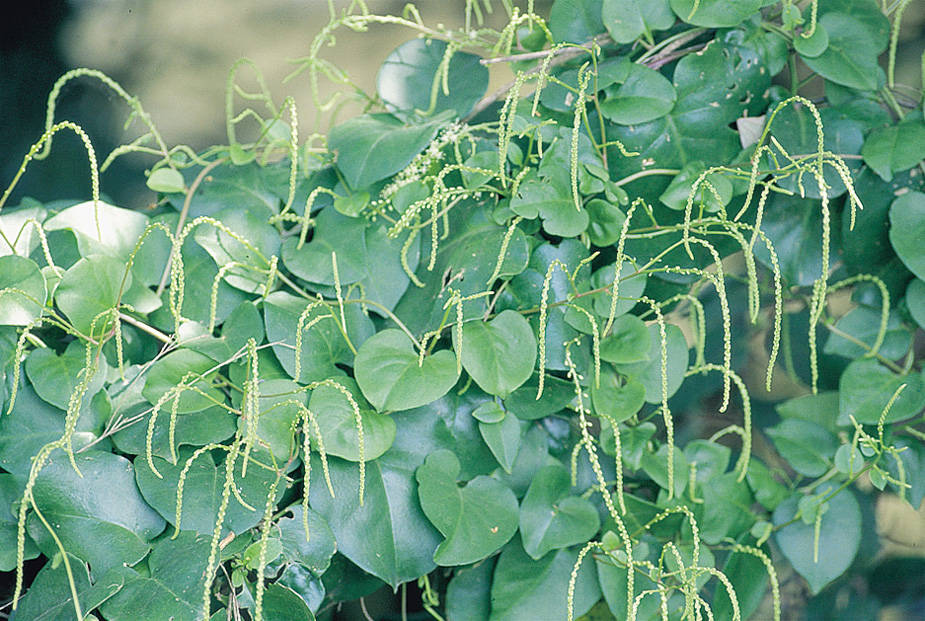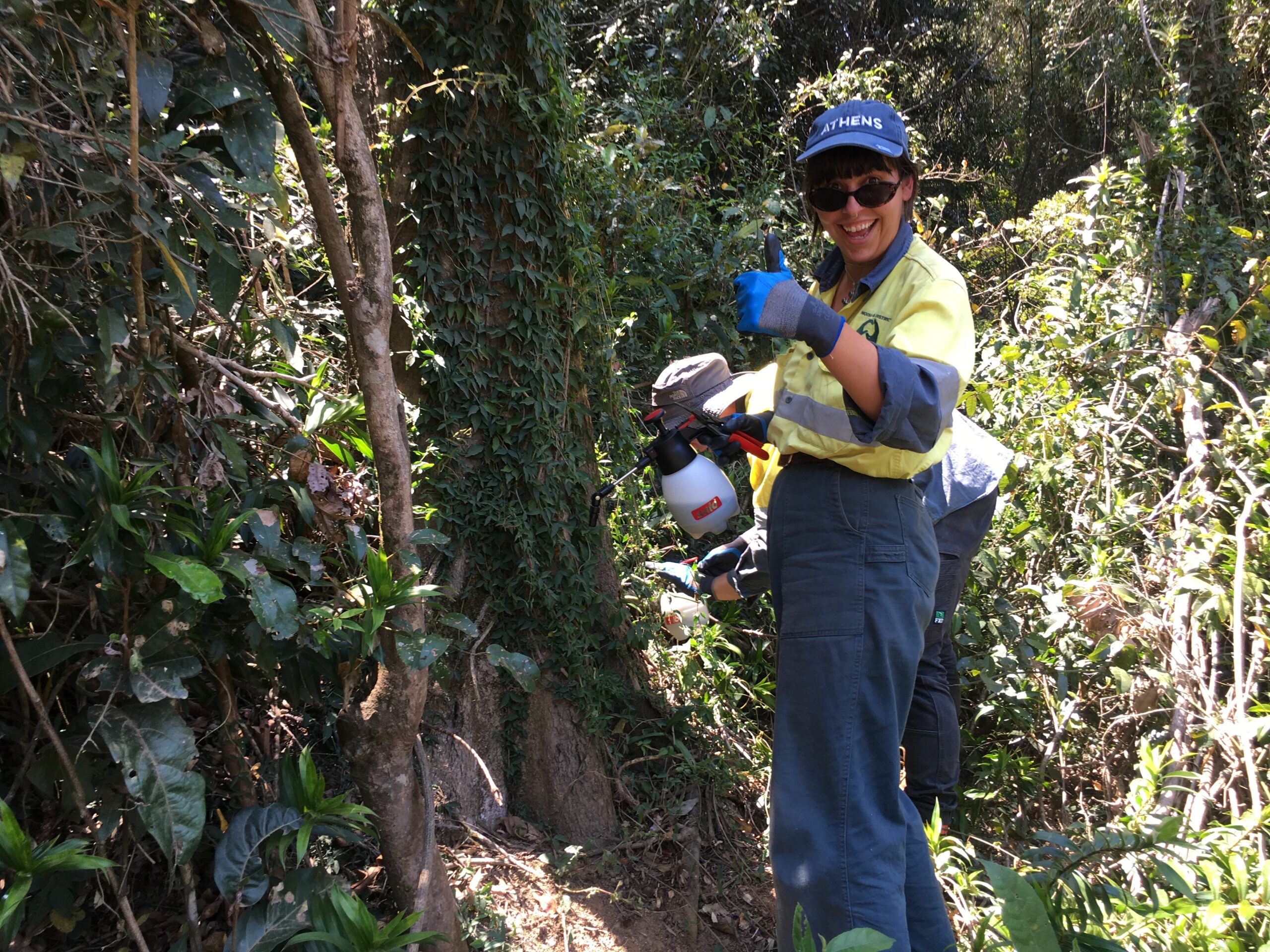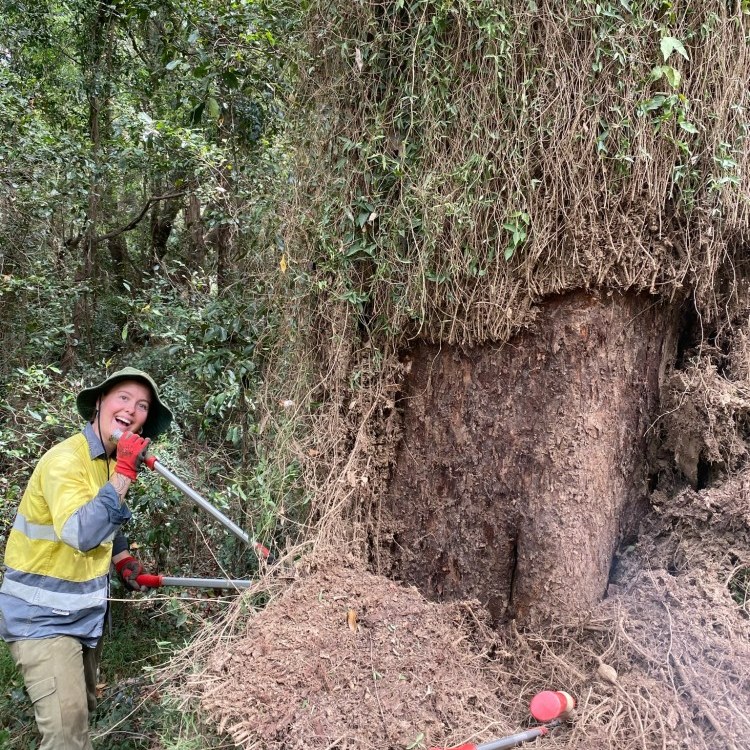The Cat’s Claw Creeper Crusade is a Noosa Landcare initiative working with our community to help slow the spread and impact of Cat’s Claw Creeper and Madeira Vine in the Noosa Shire.
Cat’s Claw Creeper Vine (Macfadyena unguis-cati), originating in Central and South America, is an aggressive climbing vine with the habit of smothering other vegetation. It is known as a ‘transformer’ weed in recognition of its ability to transform entire vegetation communities. Once commonly used as an ornamental plant in Queensland gardens, it is now one of the key invasive weed species threatening the integrity and function of the riparian zone within the Noosa and adjacent shires. Madeira Vine (Anredera cordifolia), another aggressive vine species from South America, has also taken grip on our local bushland areas here in the Noosa Shire and takes similar priority for control as of Cat’s Claw Creeper Vine. Without management, Cat’s Claw and Madeira Vine smothers ground and canopy vegetation, kills trees, exposes waterways to light and increases the risk of erosion. Cat’s Claw Creeper and Maderia Vine threatens remnant corridors of the Critically Endangered rainforest communities in the upper Noosa and Mary River Catchments. These areas are home to threatened species including the Mary River Cod (Maccullochella mariensis), Giant Barred Frog (Mixophyes iteratus), Coxen’s Fig Parrot (Cyclopsitta coxeni), Southern Penda (Xanthostemon oppositifolius) and Jointed Baloghia (Baloghia marmorata).
Noosa Landcare has launched a three-year Cat’s Claw Creeper and Madeira Vine Program for the Noosa Shire inviting landholders to send in information on the weed locations and participate in a shire wide control effort to help slow down the spread and impact of these aggressive transformer weeds.


How you can get involved
- Report sightings of Cat’s Claw Creeper and Madeira Vine in the Noosa Shire via our online form to help us better capture the distribution of these invasive vines and prioritise our resources for maximum impact.
- Do you have Cat’s Claw Creeper or Madeira Vine on your property? Please take steps to manage the infestation and help slow the spread. If you require support with control works and technical advice, please fill out the ‘Report an infestation’ online form and a Project Officer will get in touch with you.
Financial support for control works may be available to landholders through the Cat’s Claw Creeper Crusade and Noosa Council programs. Funding support is competitive and is based on priorities identified in the Cat’s Claw Creeper Vine Management Strategies for the Noosa Shire.
- Join one of our hands on practical workshops and working bees to help you better manage Cat’s Claw on your property.
Controlling transformer weeds

Biological Control
This involves the use of living organisms (usually the natural predators of the pest species) to reduce growth and reproduction of the targeted weed species.
Biocontrol agents can be useful tools that can complement chemical and physical control methods. These agents can help reduce the weed’s health and vigour, impacting production of fertile material (such as tubers and seeds).
We recommend releasing biocontrol agents where Cat’s Claw and Madeira Vine infestations are severe and other control methods are not suitable.
Biocontrol agents for Cat’s Claw Creeper Vine:
Biocontrol agents for Madeira Vine – Madeira Beetle – Factsheet
Biocontrol agents can be purchased from:

Chemical Control
Spraying Cat’s claw creeper and Madeira vine with herbicide can be effective, providing herbicides are carefully chosen and selectively applied when plants are actively growing.
Herbicides can be used either as a foliar spray or via the cut-stump (or cut and swab) method.
The below factsheets provide information on the registered and recommended herbicides for the two weeds species:

Physical Control
Cutting the stems of the vine can temporarily control Cat’s Claw Creeper Vine. Cut vines 1-2m above the ground, ideally before the flowers start to appear. Leave aerial sections to die. This will stop flowering and/or seeding.
For a more permanent solution, please refer to the cut- stump method.
Cutting and pulling Madeira Vine from the canopy is not generally recommended as it often results in a rain of viable tubers causing further spread across the site and may damage the host tree. Chemical control is recommended.
Hand weeding may be practical for smaller or immature infestation sites of Cat’s Claw and Madeira Vine by digging up seedlings and tubers of the plant. Dispose of them carefully and take care to minimise soil disturbance.
For more information on physical control methods check out the factsheets under the chemical control section.
Read our Cat’s Claw Creeper and Madeira Vine Management Strategies:
- Six Mile Creek Catchment Cats Claw Creeper Vine Strategy
- Kin Kin Catchment Cats Claw Creeper & Madeira Vine Strategy
Grab our Program Factsheet here.
Visit our resources page for useful land management factsheets, website links, book recommendations and more.
Proudly partnered with





